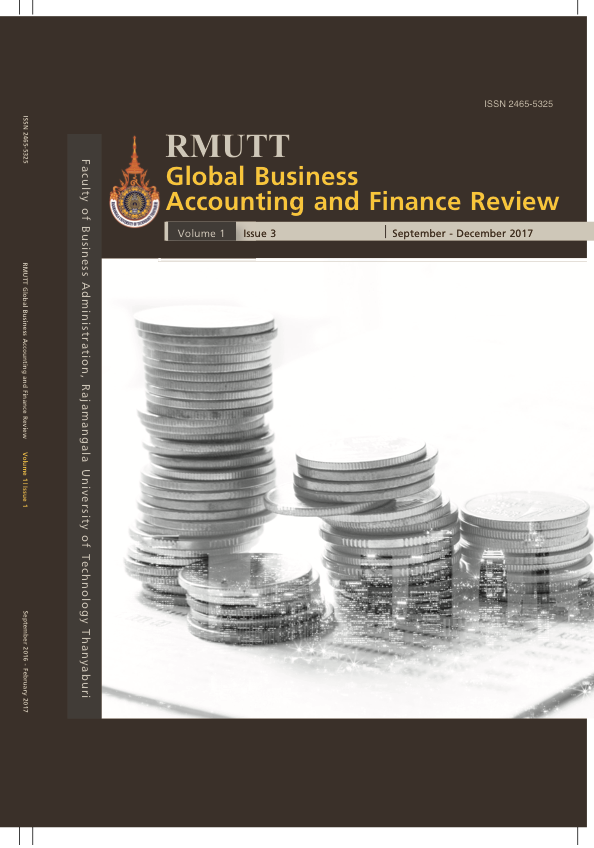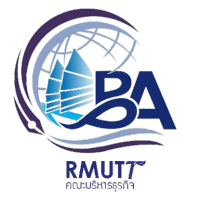Review Literature of Knowledge Management Systems Adopting Models: Individual Level Evidence
Keywords:
Knowledge Management Systems, Technology Acceptance ModelAbstract
For the modern business, Knowledge Management Systems (KMS) in organization is described as a comprehensive Information and Communication Technology (ICT) platform for collaboration and knowledge sharing with advanced services built on top. The KMS should be contextualized, integrated on the shared ontology basis and personalized for participants networked in communities. In addition, IT-based systems should be developed to support and enhance the organizational process of knowledge creation, storage/retrieval, transfer and application. This paper aimed to present a literature reviews of adoption models at the individual level of information systems both theories and prior papers. Researchers were interested in each different set of impacted factors of three prominent models: A Technology Acceptance Model (TAM), Theory of Planned Behavior (TPB) and Unified Theory of Acceptance and Use of Technology (UTAUT) for adopting KMS in organization. Researchers also reviewed current three major findings: First, model of IT adoption at the individual level; Second, empirical literature of the UTAUT and finally, definitions of knowledge management systems.
References
Abdullah, R., Selamat, M. H., Jaafar, A., Abdullah, S., & Sura, S. (2008). “An empirical study of knowledge management system implementation in public higher learning institution”.
Ajzen, I. (1991). “The theory of planned behavior. Organizational behavior and human decision processes”, 50(2), 179-211.
Ajzen, I. (2002). “Perceived Behavioral Control, Self-Efficacy, Locus of Control, and the Theory of Planned Behavior1”. Journal of Applied Social Psychology, 32(4), 665-683. doi: 10.1111/j.1559-1816.2002.tb00236.x
Alavi, M., & Leidner, D. E. (2001). “Review: Knowledge management and knowledge management systems: Conceptual foundations and research issues”. MIS quarterly, 107-136.
Bair, J. H., & O'Connor, E. (1998). “The state of the product in knowledge management”. Journal of Knowledge Management, 2(2), 20-27.
Cerchione, R., & Esposito, E. (2017). Using knowledge management systems: A taxonomy of SME strategies. International Journal of Information Management, 37(1, Part B), 1551-1562.
Chan, S., & Lu, M. (2004). Understanding internet banking adoption and use behavior: A Hong Kong perspective.
Chang, S. F., Hsieh, P. J., & Chen, H. F. (2015). Key success factors for clinical knowledge management systems: Comparing physician and hospital manager viewpoints. Technol Health Care, 24 Suppl 1, S297-306.
Chooprayoon, V., & Fung, C. C. (2010). “TECTAM: An Approach to Study Technology Acceptance Model (TAM) in Gaining Knowledge on the Adoption and Use of E-Commerce/E-Business Technology among Small and Medium Enterprises in Thailand”. InTech, 31-38.
Ciganek, A. P., Mao, E., & Srite, M. (2010). “Organizational culture for knowledge management systems: a study of corporate users”. Ubiquitous Developments in Knowledge Management: Integrations and Trends: Integrations and Trends, 52.
Davenport, T. H., Jarvenpaa, S. L., & Beers, M. C. (1996). “Improving knowledge work processes”. MIT Sloan Management Review, 37(4), 53.
Davis, F. D. (1985). “A technology acceptance model for empirically testing new end-user information systems : theory and results”: Massachusetts Institute of Technology.
Davis, F. D., Bagozzi, R. P., & Warshaw, P. R. (1989). “User acceptance of computer technology: a comparison of two theoretical models”. Management science, 35(8), 982-1003.
Detlor, B. (2002). “An informational perspective towards knowledge work: Implications for knowledge management systems”. Knowledge mapping and management, 195-205.
Fishbein, M., & Ajzen, I. (1977). “Belief, attitude, intention, and behavior: An introduction to theory and research”.
Fretwell, C. E., Lewis, C. C., & Ryan, J. (2014). “An Examination of the Role of Social Influence and Organizational Hierarchy on Knowledge Management System Usage”.
Gallupe, B. (2001). “Knowledge management systems: surveying the landscape”. International Journal of Management Reviews, 3(1), 61-77.
Gray, P. H. (2000). “The effects of knowledge management systems on emergent teams: towards a research model”. The journal of strategic information systems, 9(2), 175-191.
Hahn, J., & Subramani, M. R. (2000). “A framework of knowledge management systems: issues and challenges for theory and practice”. Paper presented at the Proceedings of the twenty first international conference on Information systems.
Harrison, D. A., Mykytyn Jr, P. P., & Riemenschneider, C. K. (1997). “Executive decisions about adoption of information technology in small business: Theory and empirical tests”. Information systems research, 8(2), 171-195.
Hart, S. L., & Dowell, G. (2010). “A natural-resource-based view of the firm: Fifteen years after”. Journal of management, 0149206310390219.
Hasan, H., & Gould, E. (2003). “Activity-based knowledge management systems”. Journal of Information & Knowledge Management, 2(02), 107-115.
He, J. W., & Wei, K.-K. (2007). “Understanding knowledge management systems continuance: a decomposed model”. PACIS 2007 Proceedings, 152.
Hester, A. J. (2010). “A comparison of the influence of social factors and technological factors on adoption and usage of knowledge management systems”. Paper presented at the System Sciences (HICSS), 2010 43rd Hawaii International Conference on.
Holtshouse, D., Borghoff, U. M., & Pareschi, R. (2013). “Information technology for knowledge management”: Springer Science & Business Media.
Isabelle, B., & Sandrine, O.-H. (2009). “Towards an understanding of knowledge management systems-UTAUT revisited”. AMCIS 2009 Proceedings, 445.
Jennex, M., & Olfman, L. (2005). “Assessing knowledge management success”. International Journal of Knowledge Management (IJKM), 1(2), 33-49.
Kankanhalli, A., & Tan, B. C. (2004). “A review of metrics for knowledge management systems and knowledge management initiatives”. Paper presented at the System Sciences, 2004. Proceedings of the 37th Annual Hawaii International Conference on.
Karim, N. S. A., Razi, M. J. M., Mohamed, N., & Abdullah, L. M. (2012). “Influential Factors of KM Process Adoption: A Social-technological Based Approach”. International Journal of Innovation and Business Strategy, 1.
Lee, M. R., & Lan, Y.-C. (2011). Toward a unified knowledge management model for SMEs. Expert Systems with Applications, 38(1), 729-735.









